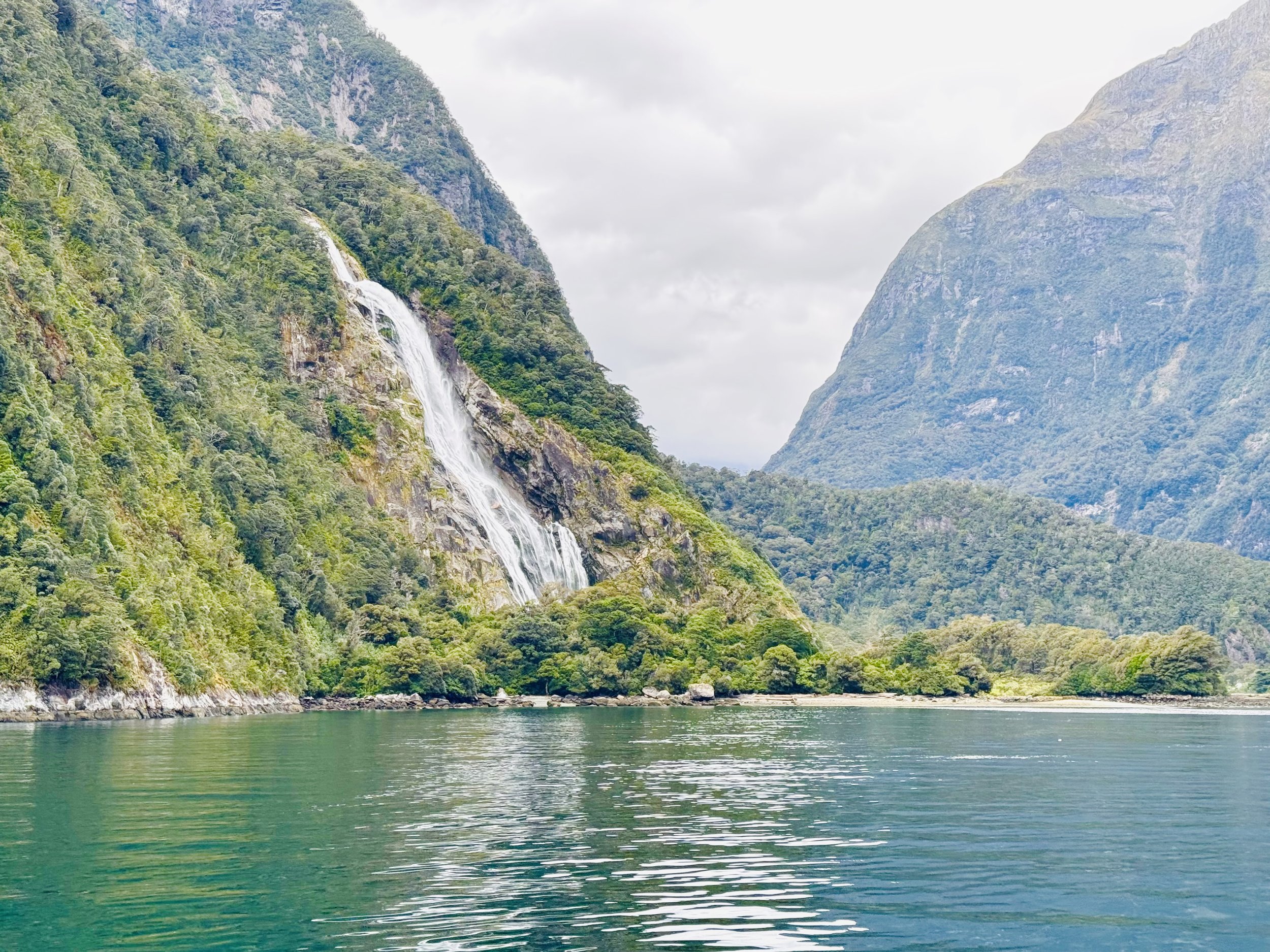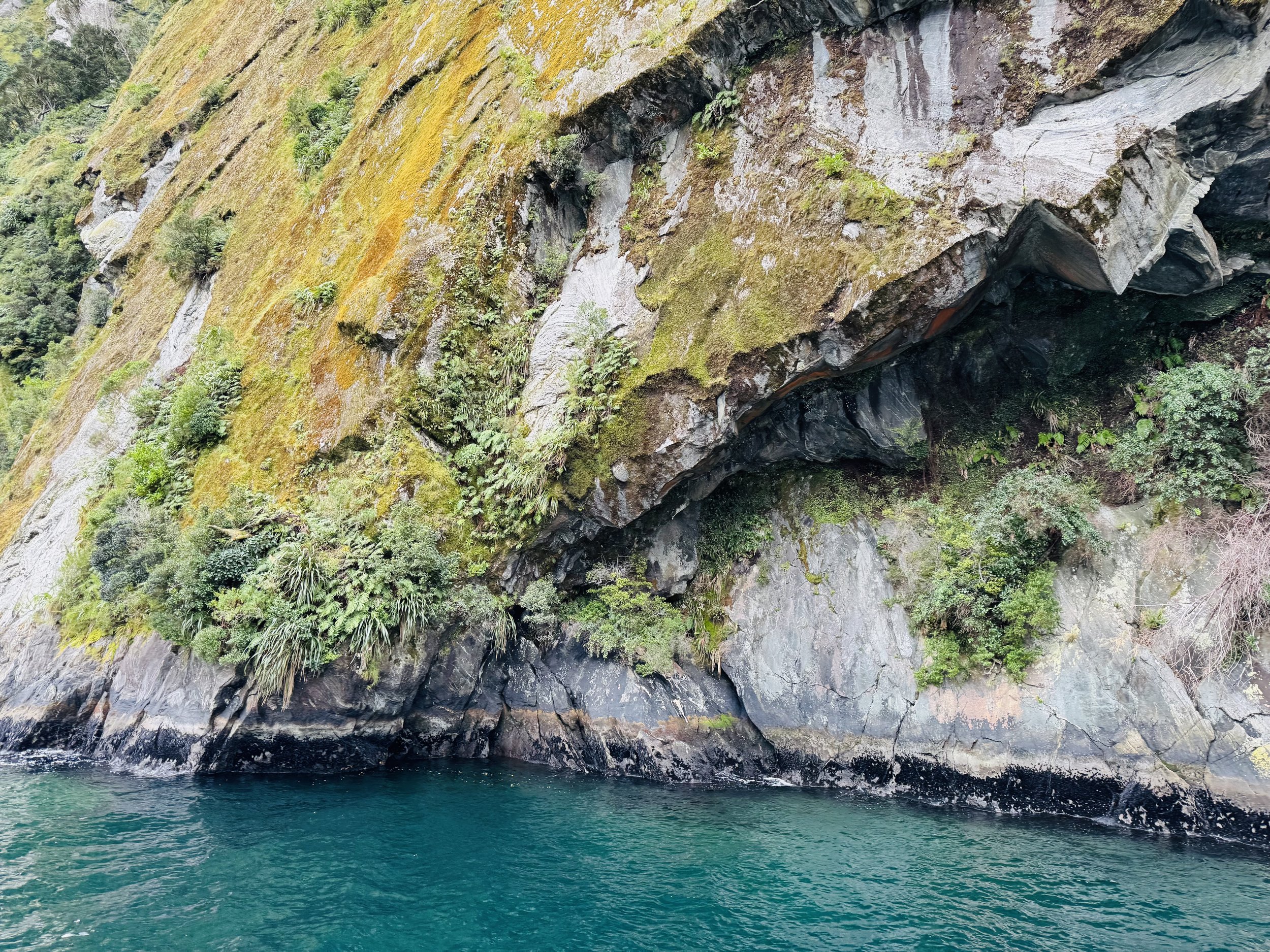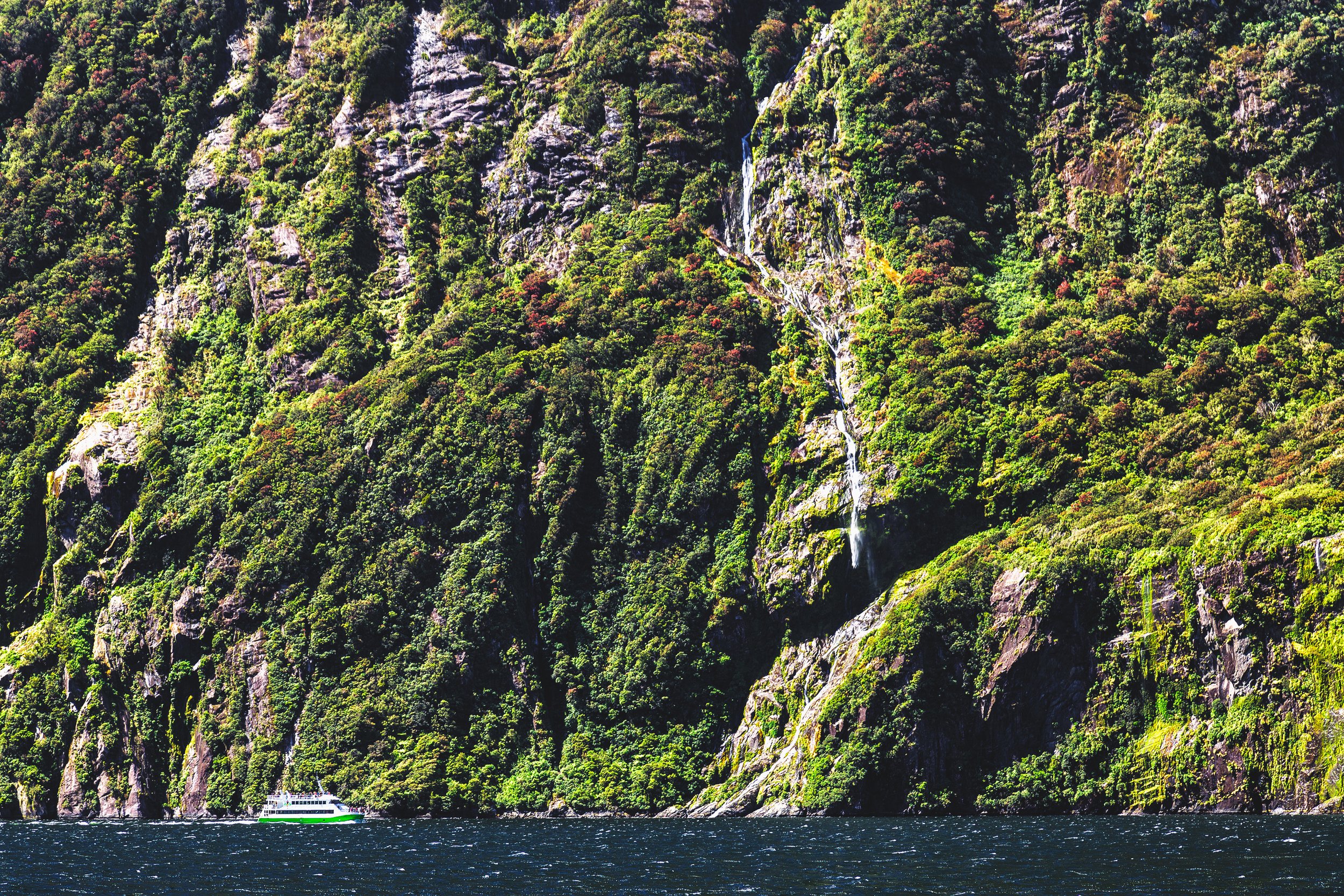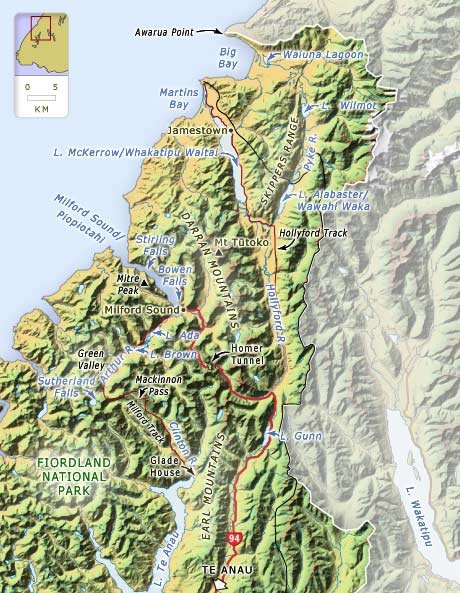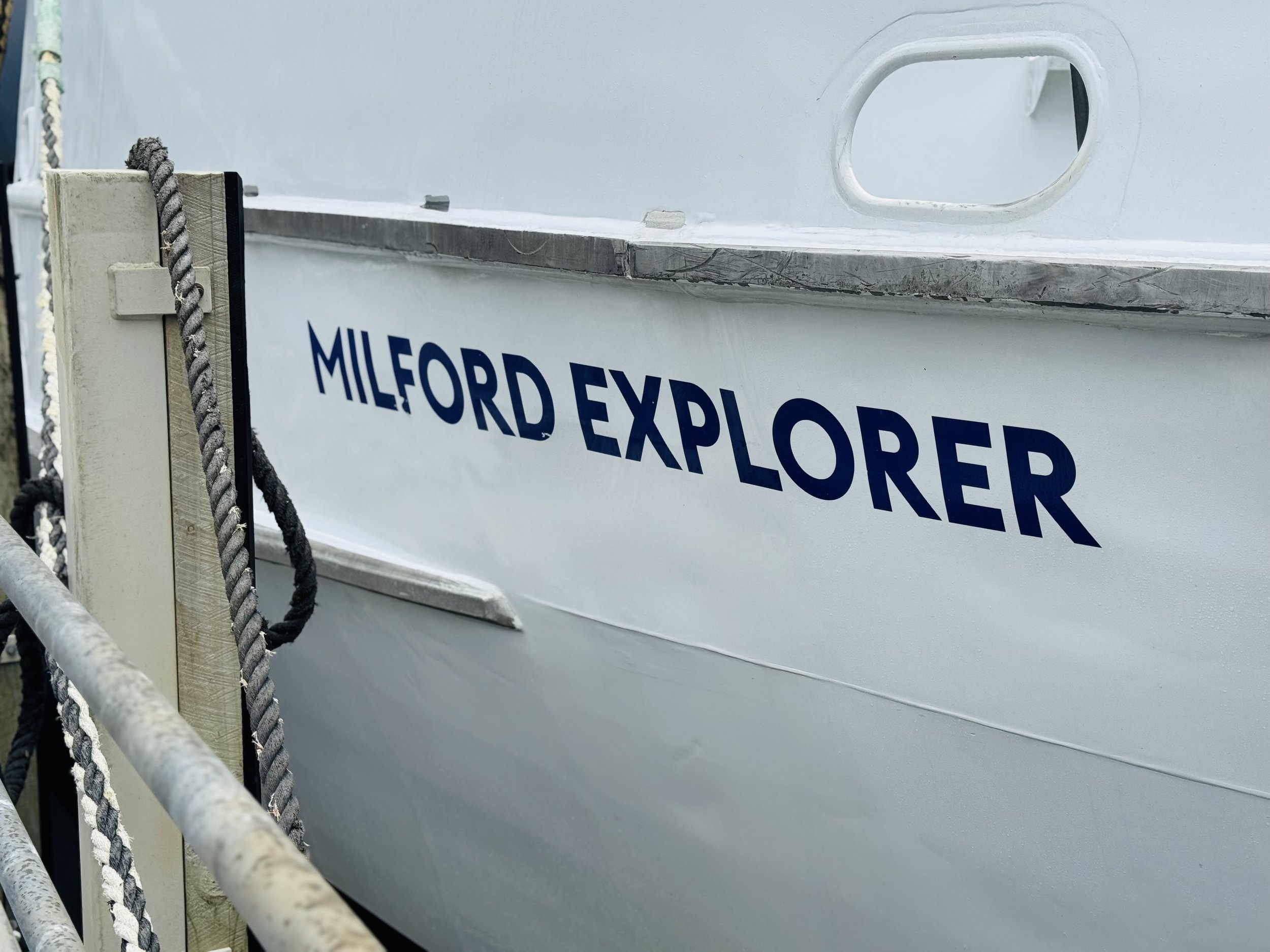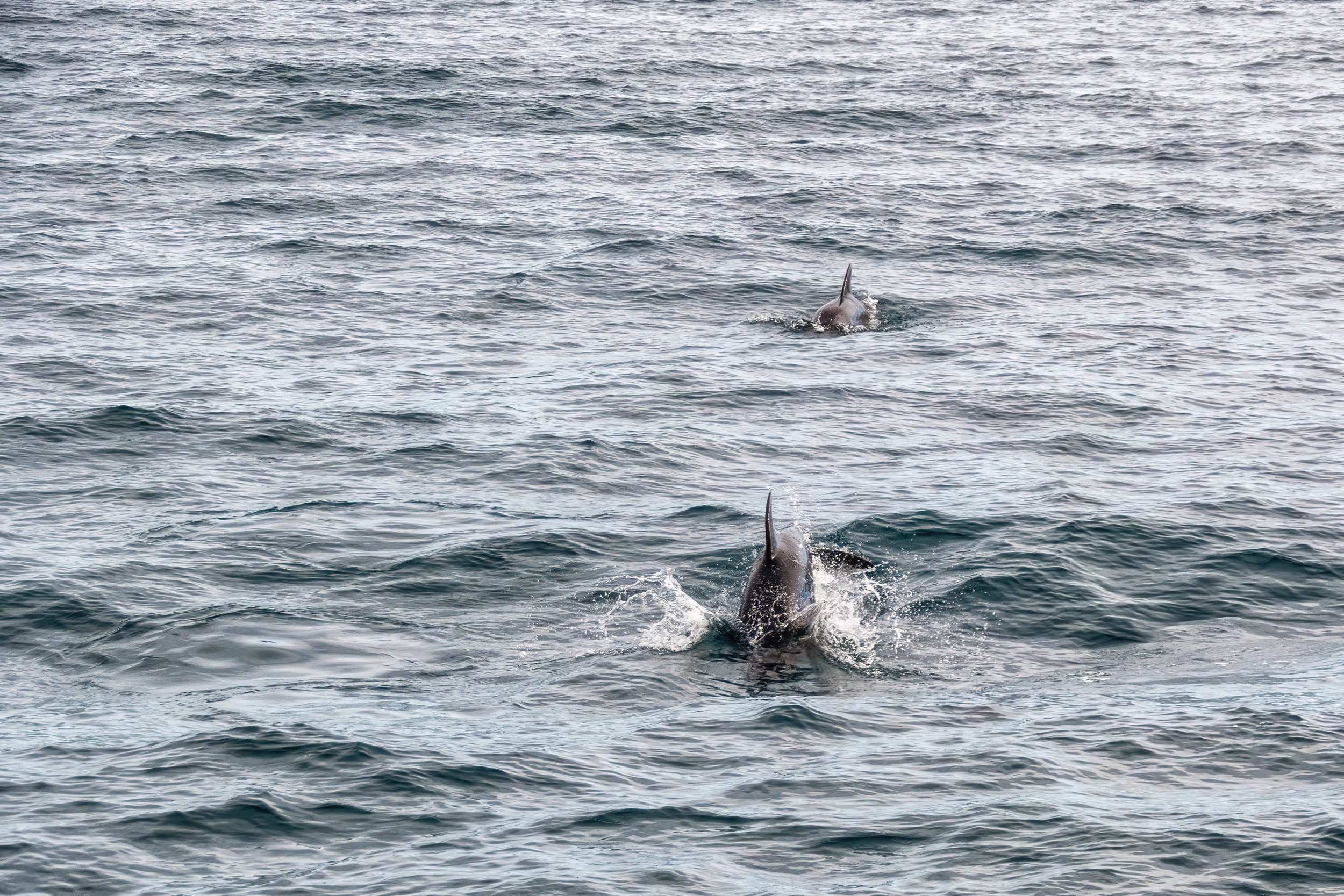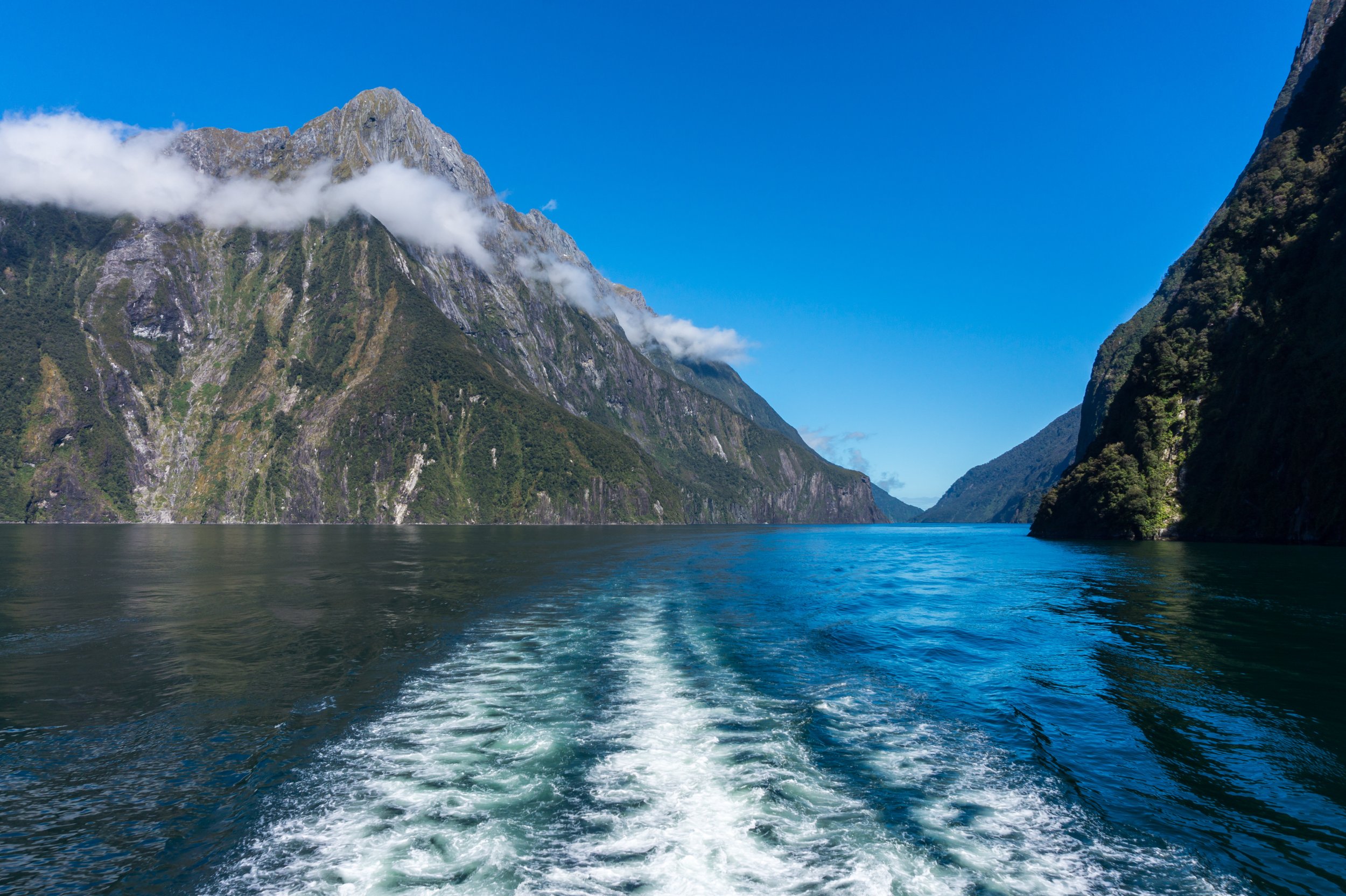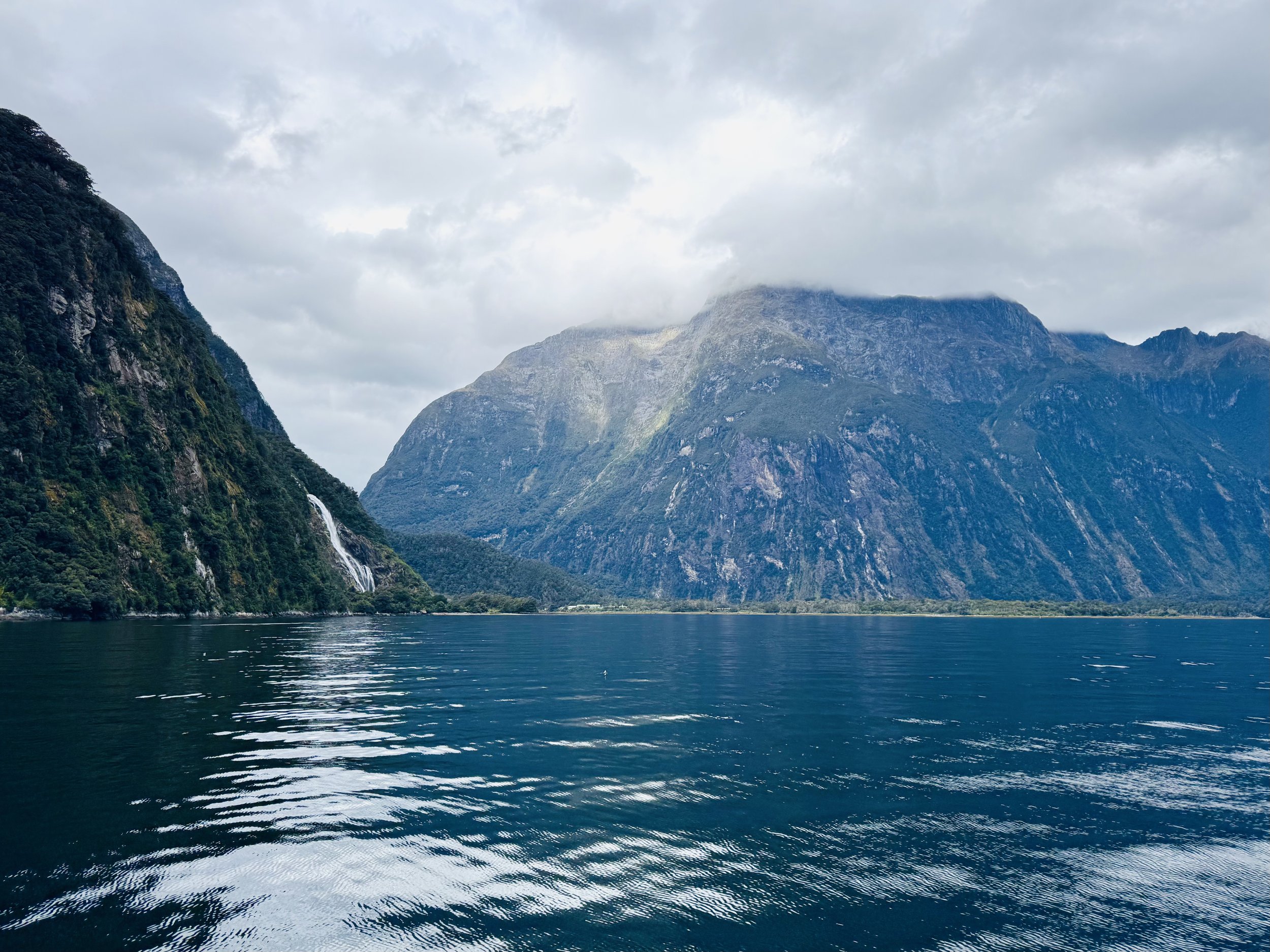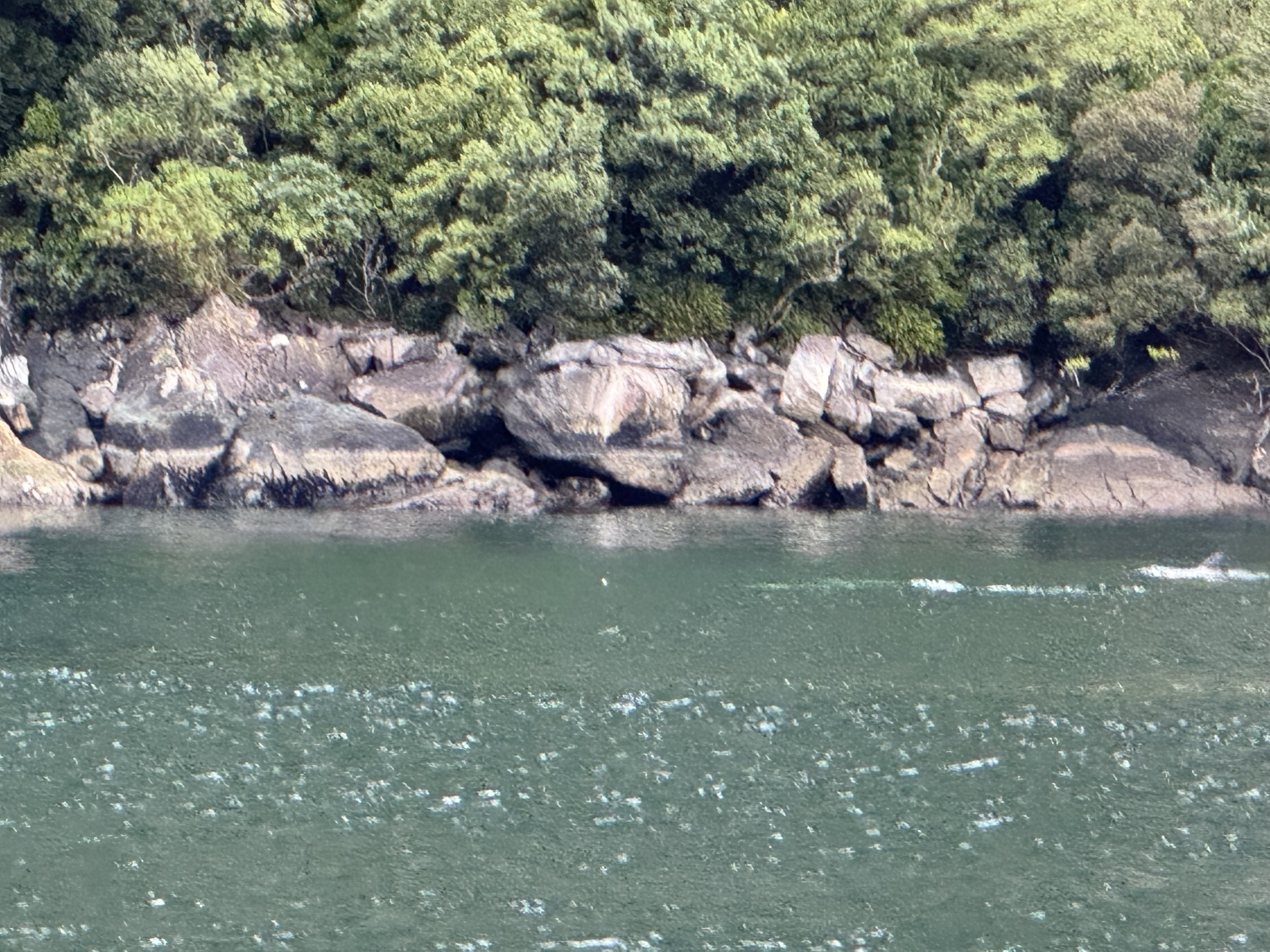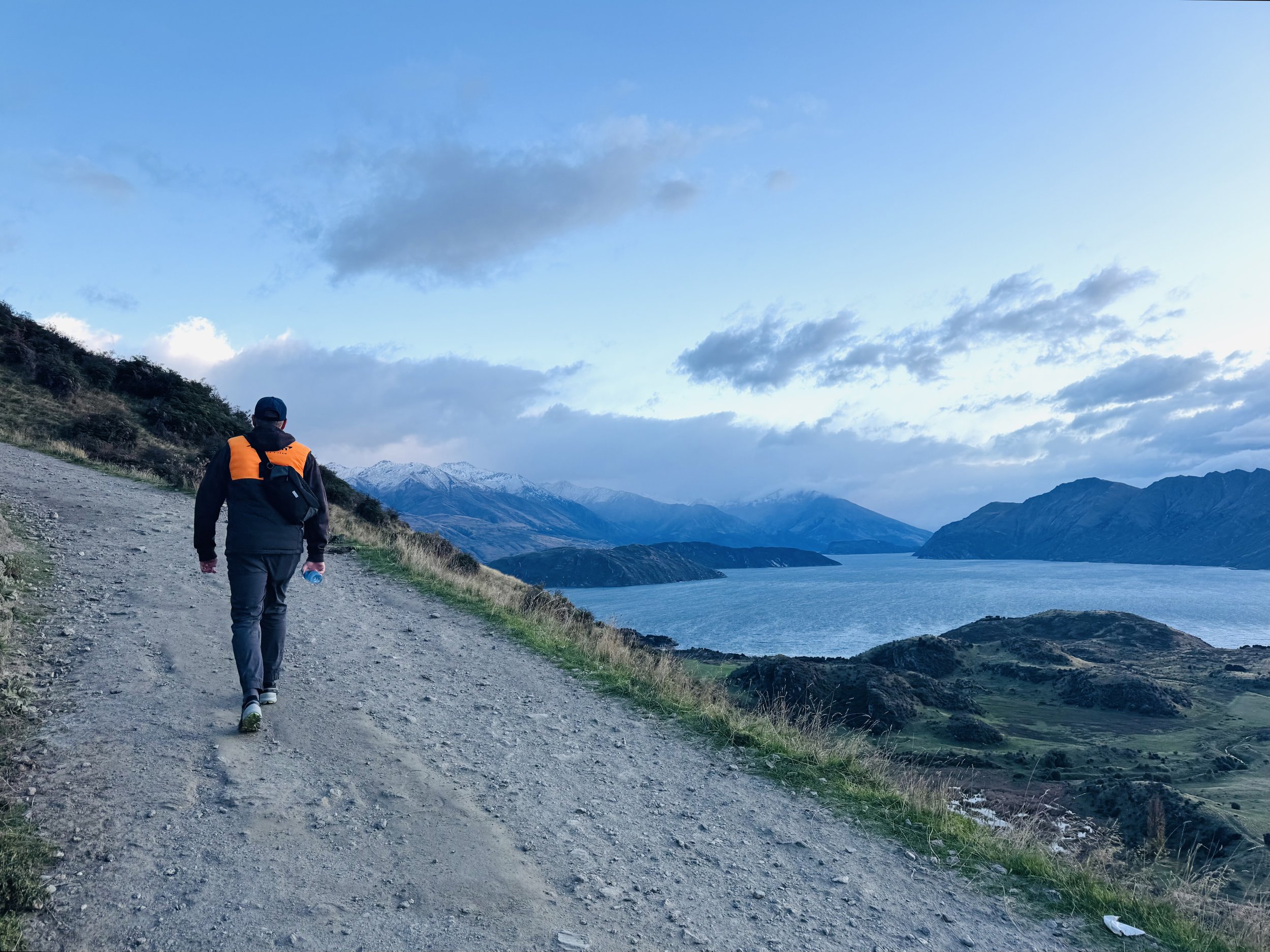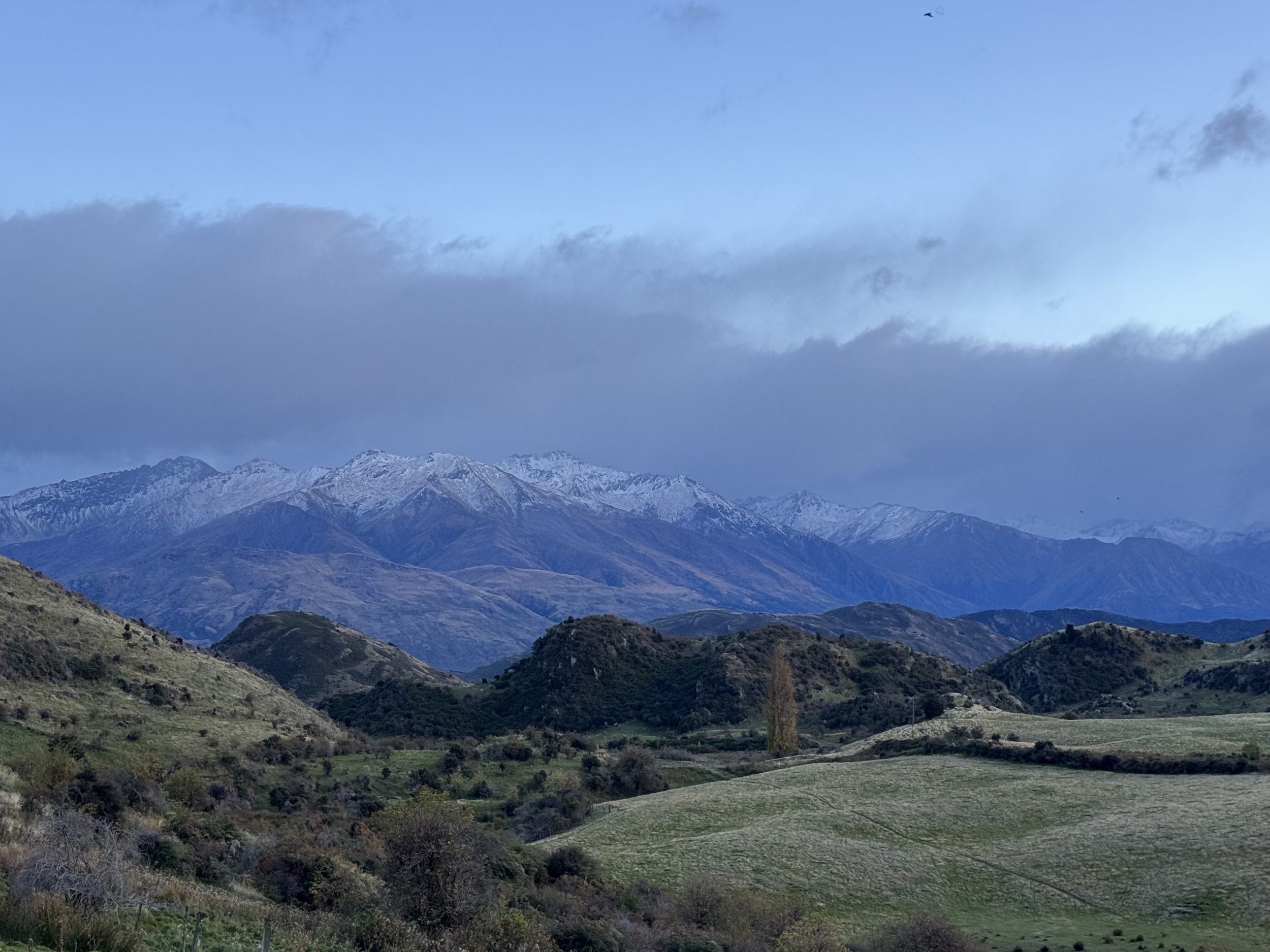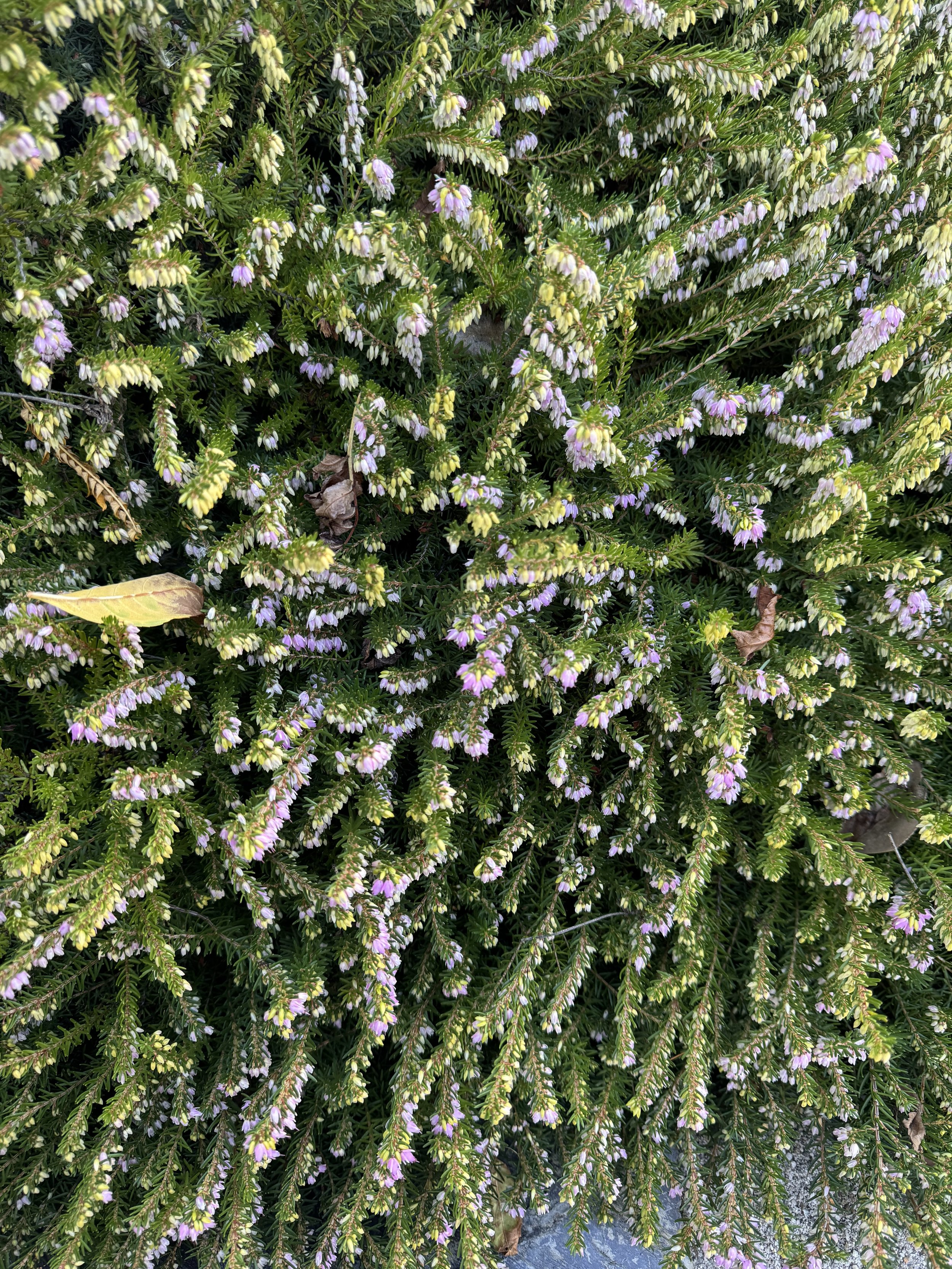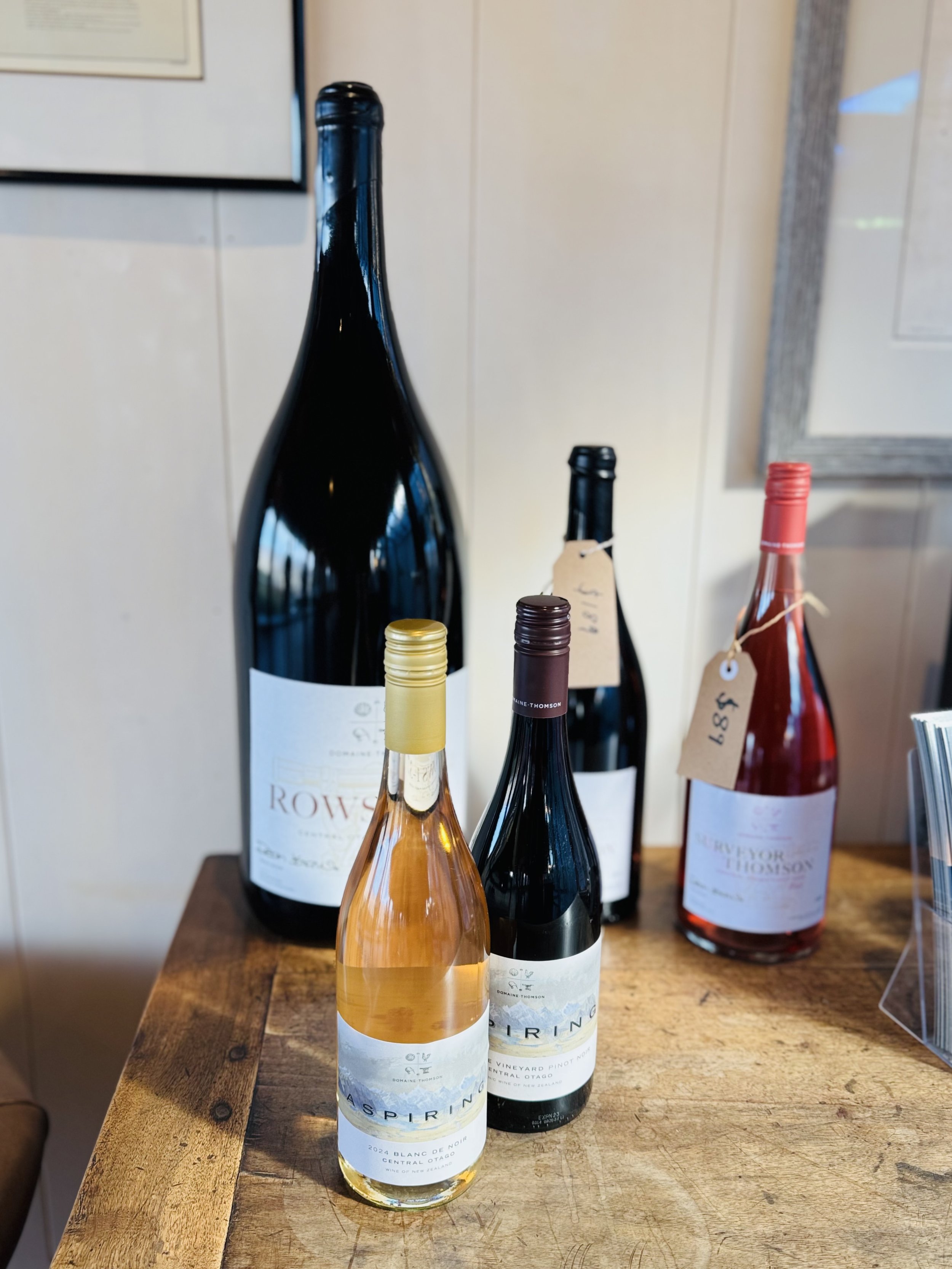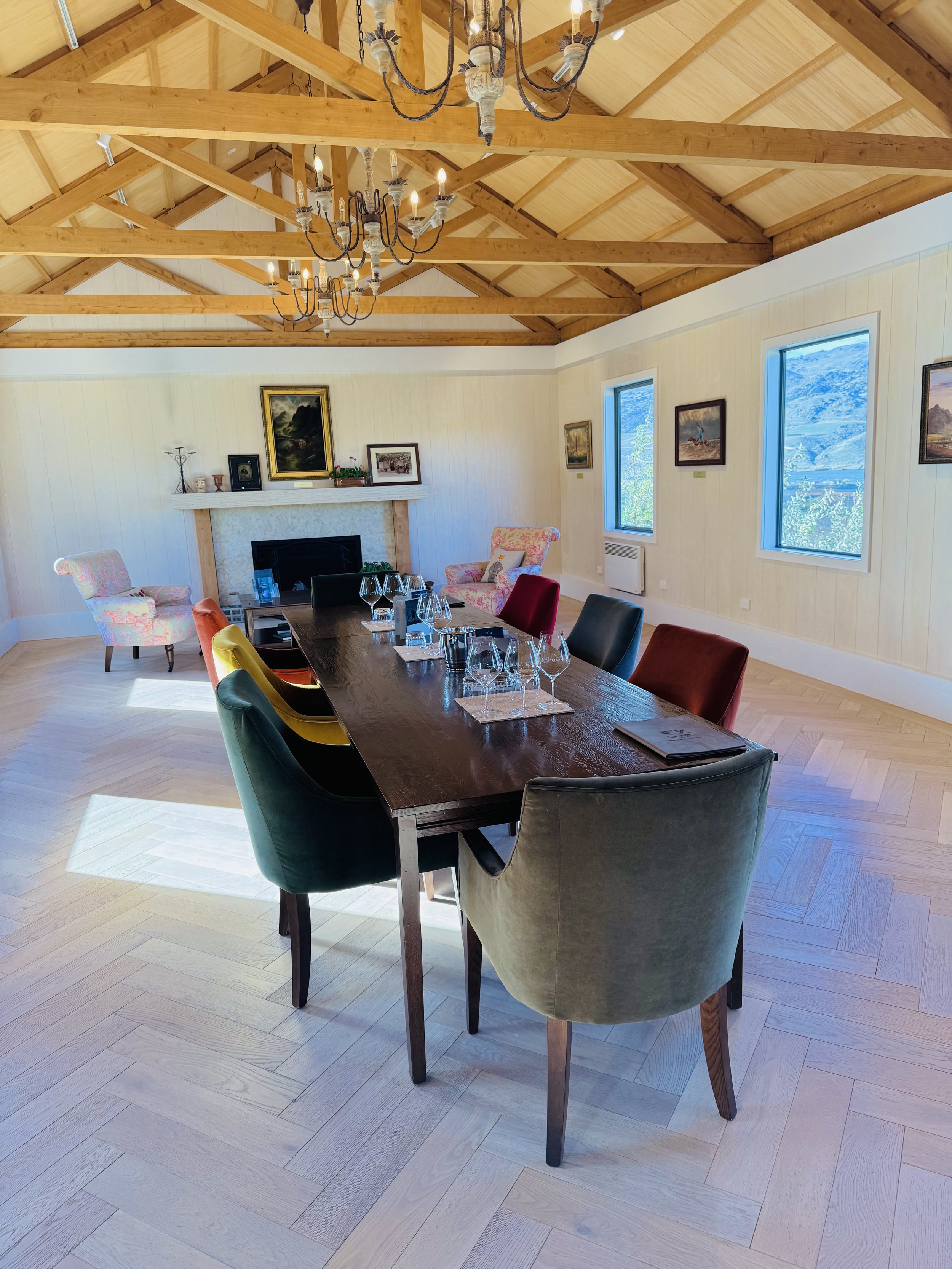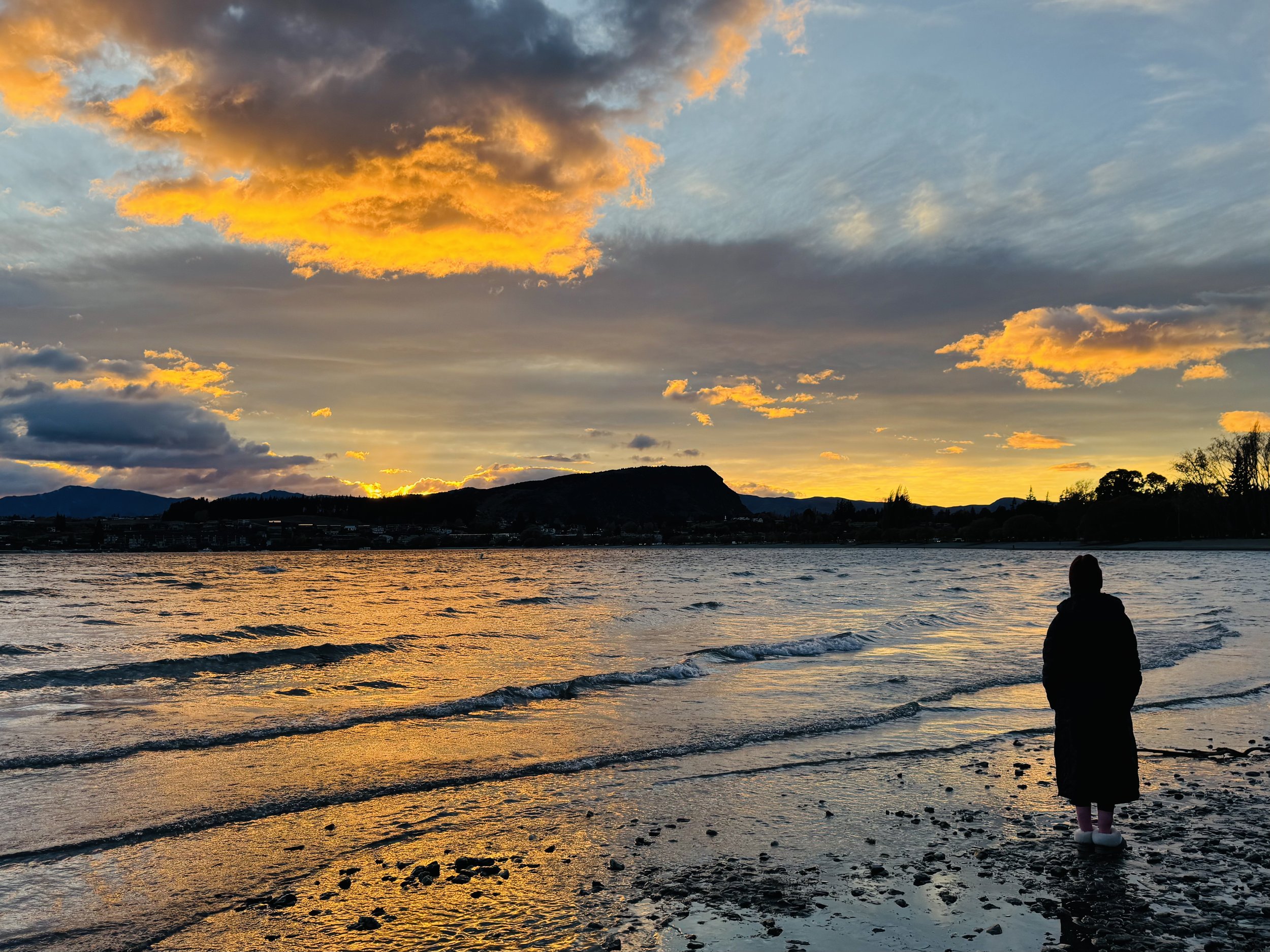9. Fiordland, Rainforests, & Wānaka
The iconic Bowen Falls. It’s one of the two permanent waterfalls here in Milford Sound. The falls drop an impressive 162 meters.
May 6 - May 7, 2025
[My last trip blog post]
To my most beloved readers, this post covers the final leg of our adventure—Tuesday and Wednesday.
Our journey home begins on Thursday and by Friday evening, we’ll be back home—just in time for dinner. See you all soon!
Tuesday, May 6
We woke up in the Mountain View room at Milford Sound Lodge feeling like we’d accidentally joined the one percent. The room itself was cozy, modern cabin chic, and floor-to-ceiling windows featuring the majestic Fiordland Mountains.
A staff member appeared at the door with a vanilla latte, handmade and hand-delivered. It was the kind of personal touch that makes you realize this place isn’t just about the views—it’s about making you feel like you belong here.
Breakfast followed—a thoughtful spread that hit that sweet spot between comfort and class. Muffins baked perfectly, muesli handmade, local ingredients, and just enough flair to remind you that you’re staying somewhere special. The lodge itself? Absolute five-star experience. Impeccable service, luxury without pretense, and a location so good it feels rude to leave.
Would I recommend? Yes. Enthusiastically. And I might just move in if they don’t notice.
EXPLORING BY BOAT
We made our way from the lodge down to the harbour for a boat trip through the sound with Cruise Milford, and let me just say—the staff were both informative and brought us right up to the waterfalls, dolphins, seals, and rock faces surrounding the sound.
I learned so much about the Fiordland through our Captain Craig Hind. He is an incredible explorer and adventurer, who tours and teaches travellers in Milford Sound. He also is an accomplished diver, fisherman, and studies Great White Sharks.
Everything he shared with us felt so important and so invaluable that I asked for his notes. Now, once again, it’s become my life’s purpose to share every last detail with you.
GLACIERS
Milford was created by glaciers. Three different glaciers, through three different ice ages, cut their way through here, leaving behind open barren rock.
There is no form of soil or any water table. What you see happening above the water is exactly what is happening below. Very steep sides which descend down to a U-shaped bottom and the average depth in Milford is 285m of water. It’s all 100% salt water, all part of the Southern Ocean or the Tasman Sea.
All the vegetation makes up a temperate rainforest and all the trees and plants you see are just growing off the rock face with their roots firmly in the cracks and crevices. They get all their required moisture from the astronomical amount of rain we get here every year.
They don’t measure our rainfall in millimetres, centimetres, or feet. They get so much rain, we have to measure it in meters. Their average annual rainfall is 8m of rain and it rains 250 days of the year. This makes Milford the wettest place on earth at sea level.
FAIRY FALLS
So, 99% of the waterfalls in Milford are very much rain-affected, so they come and go very quickly.
They only have 2 permanently flowing waterfalls here in Milford.
The little waterfalls you sometimes see in pictures are the last remaining rain-affected waterfalls. One particular waterfall—the original settlers decided it looked like a bunch of fairies falling over the top of the mountain, so they called it Fairy Falls.
In recent years, they have come to a far more accurate conclusion as to why it was called Fairy Falls… it’s named after the Ottawa Senators.
SINDBAD GULLEY
We also saw Sindbad Gulley. It’s a typical glacier-cut valley with very steep sides and a U-shaped valley floor. Captain Craig informed us that Sinbad was made famous many years ago, as it was the last place that they found the New Zealand Kakapo on mainland New Zealand.
KAKAPO
The Kakapo is a very large, beautiful green flightless parrot. Actually one of the largest parrots found anywhere in the world. They were thought to be completely extinct on mainland New Zealand. In recent years, a very small population was found living on Stewart Island.
There is now a very successful captive breeding program in place with about 130 birds alive today.
This is a very unfortunate example of what a detrimental effect introduced species can have on a very sensitive island environment. Species such as possums, stoats, and rats.
FRESHWATER LAYER
Back to the rain—as all this rain falls, it runs very quickly off the mountain sides and into the fiord. As it does this, it picks up tannins—a dark tea-coloured stain found in roots, rotting debris, and leaf litter on the mountain sides. Now, because fresh water and salt water have different densities, the fresh water will form a layer on top of the salt water.
During very severe weather events, they can see 6/7m of this fresh water forming over the salt water. This results in the salt water below being very dark, so a lot of their deep-water marine species get fooled into believing that Milford is a lot deeper than it really is.
So, species such as Black Coral, which is generally found out in the southern ocean at very extreme depths, can be found growing as shallow as 9m here in Milford. People actually come from all over the world to dive and experience this very unique underwater environment.
MITRE PEAK
Mitre Peak is one of New Zealand’s most famous and most photographed mountains. It’s 1,682m high, and the reason for it being so famous is that the vertical sea cliff on the left-hand side of us, at its deepest point, it descends down below sea level for 209m. This makes Mitre Peak the second highest mountain in the world to rise directly out of the ocean.
COPPER POINT
Copper Point, also known as Windy Point, is one of the narrowest parts of the fjord. When they get prevailing north-westerly storms that blow in from the Tasman Sea, the wind gets compressed and funnelled through this little gap and accelerates dramatically. On very windy days, it’s not uncommon for us to see wind gusts of up to and over 100 knots.
FAULT LINE
Going up the side of the mountain Captain Craig pointed us to a very deep and defined crack and informed us this is a tectonic splinter. This is a crack in the Earth’s surface that was created by a very large earthquake and estimated 18,000 years ago.
Milford lies straight over the top of the very active and very famous alpine fault. The Alpine Fault marks the boundary between the Australian Plate and the Pacific Plate. These plates are grinding past each other at about 3 centimeters per year—a rate that might sound slow but is geologically aggressive.
It’s one of the most active and fastest-moving faults in the world.
The fault runs for about 600 km, cutting diagonally through the South Island from Fiordland to Marlborough.
What Makes This One So Concerning?
Scientists say there’s a roughly 75% chance of a magnitude 8 or higher earthquake on this fault in the next 50 years.
The last major quake was in 1717—over 300 years ago—which means it’s overdue based on the average cycle of every 300 years.
Historically, the fault has produced a massive earthquake every 291 years on average, meaning the clock is ticking.
When it goes off, it’s expected to cause widespread damage, not just because of the shaking but also from landslides, flooding, and disrupted infrastructure.
What Would the Quake Be Like?
Magnitude: Around 8.0 or higher—that’s serious ground-shaking power.
Duration: Could last 2–3 minutes (way longer than it sounds).
Intensity: The ground could shift up to 8 meters horizontally and 2 meters vertically.
Impact: Devastating in places like Queenstown, Wanaka, and the West Coast, with roads cut off and buildings severely damaged.
Preparedness and Reality Check
New Zealand’s National Emergency Management Agency (NEMA) has detailed plans for responding to such a quake. Residents are encouraged to have emergency kits, water supplies, and communication plans in place. The infrastructure, including buildings and roads, has been increasingly built to withstand seismic activity. However, no structure is fully quake-proof.
Why Do Scientists Seem So Sure?
The Alpine Fault is exceptionally well-studied. Scientists have examined sediment layers and found that the fault ruptures in a big way about every 300 years. There’s also a network of seismic monitoring equipment across the fault to track any unusual movements so that, hopefully, there will be some warning.
Okay, enough of that scary stuff and onto other scary stuff:
SHARKS
Captain Craig informed us that they do get the occasional great white shark in Milford. Most of them migrate between here and Stewart Island and have been recorded as far north as Fiordland. They mainly come here to feed on the seal population. Milford Sound is a very deep fjord with very limited visibility underwater, which makes it perfect for these sharks. They can sneak up on their prey very easily, but the chance of seeing one from the boat is very slim.
SEALS
Most of the seals in the fjord are young, juvenile males. They’ve all been kicked out of the main rookeries by the big dominant males and they hang out here in the fjords until they grow to a much larger size where they can compete with the big males for a girlfriend back in the main rookeries. Now, like typical teenagers, these little guys sit around doing nothing during the day but at night they’ll head off to feed. The New Zealand fur seal is the deepest diving of all fur seal species. Some have been recorded diving down as deep as 230m.
DOLPHINS
One of the unexpected highlights of cruising through Milford Sound was spotting a pod of bottlenose dolphins. They appeared almost out of nowhere, gliding through the water alongside the boat. Seeing them up close was incredible—their sleek, silver bodies arcing gracefully out of the water as they kept pace with us.
Bottlenose dolphins in Milford Sound can reach up to 4 meters (13 feet) in length, making them some of the largest of their kind. They’re drawn to the area because of the rich, cold waters that provide plenty of food.
As they swam alongside the boat, it was clear they were curious—playfully weaving in and out of the wake. It’s not uncommon to see dolphins in the fjord, but it still felt like a rare and special moment. The crew explained that the dolphins are used to boats and sometimes even seem to enjoy racing them, showing off their agility and speed.
Watching them interact and play in their natural habitat was a memorable experience and a reminder of how alive and vibrant Milford Sound really is. It’s moments like this that make you appreciate how special this place truly is.
FISHING
On sustainability… they have a very successful, commercial cray fishing industry here. The local commercial fishermen over the years have worked very hard with the Ministry of Fisheries to establish and maintain a very sustainable quota. Their crayfish fishery is in exceptionally good order and about 25% of the national sustainable quota. This is done between 12 boats. This Commercial Fishing industry is a perfect example of how sustainable fishing can be managed.
When it comes to recreational fishing they can catch beautiful eating fish such as blue cod, terakihi, trumpeter, and some very big grouper or hapuka. In the summer months, we can catch albacore tuna, southern bluefin tuna, yellowtail kingfish, and very good fishing for broadbill swordfish.
KEA PARROTS & WEKA BIRDS
When we came onshore, I reluctantly peeled myself away from the view, we disembarked, and started the short hike back to the car. The path was lush and quiet, with the mist still hanging around like it had forgotten to leave. After a morning surrounded by mountains and waterfalls, it was almost a shock to be back on solid ground.
But as we approached the car, we realized we weren’t alone. Perched proudly on the roof like it was their personal chariot were two Kea parrots—the ultimate double act.
The Kea could hear us munching on snacks—bright, bold, and clearly up to something. These parrots are infamous for their curiosity and cleverness, known for pulling apart anything that isn’t bolted down. This one was eyeing my crackers like it was a personal challenge. Meanwhile, a Weka (super cute little guys) strolled up and stood next to me, slightly less flashy but just as confident, as if guarding the car like a self-appointed security detail.
We tried shooing them off, but they were unfazed. The Kea seemed particularly determined to make the car its perch, giving us a sidelong glance that said, “This is my car now.” The Weka just pecked at the ground nonchalantly, acting like it was just waiting for me to buckle him into the car seat.
It was a standoff—us trying to gently coax them away, and them refusing to give up their new prime real estate. After a few minutes of negotiation, they finally hopped off, wandering away like they’d just decided they had better places to be (or someone who would actually feed them).
We got back into the car, half relieved, half entertained. It’s not every day your vehicle gets commandeered by parrots and wekas. As we pulled out of the lot, the Kea gave us one last squawk, marking our departure as a minor victory in its ongoing quest to dominate all things parked.
If there’s one thing to take away from Milford Sound, it’s that the wildlife is as bold and unbothered as the landscape itself. You’re a guest in their world, and sometimes they want to make that very clear.
Crown Range Road
After surviving the 8th wonder of the world, we started the long drive to Wānaka via the Crown Range Road. This is one of the most famous and scenic drives in the South Island.
It is also New Zealand’s highest paved road, climbing to 1,121 meters (3,678 feet). It’s got sharp hairpins, panoramic views that make you reconsider your place in the universe, and just enough sheer drops to keep your heart rate up.
John, of course, used this opportunity to remind me the benefits of owning a sports car—and since we don’t have one…
🧐🤔
Anyway, it took multiple doses of medication to get me through that drive.
Roy’s Peak
Next, we tackled Roy’s Peak, (read: John forced me to) and let me be clear: this hike is not for the faint of heart or the easily distracted.
It’s a relentless 1,300-meter climb (death march) over 8 km one way. A punishing uphill “hike” that is only worth it because of the increasingly amazing views. Think: 8km of stairs. Straight.
Place bets on how far we made it up.
By the time we finished, I felt both physically accomplished and spiritually humbled. The views? Utterly unreal. You’re looking at Lake Wānaka with the Southern Alps stretching out in all directions. It’s a 10/10 for visual reward but a solid 4/10 for wondering why you didn’t just go straight to breakfast instead.
Brunch: Relishes Café
After surviving the hike, we rewarded ourselves with brunch at Relishes Café. The avocado toast was the best dish I’d had on this trip so far, and the chai latte was perfect. If you’re in Wānaka, eat here. You’ll feel justified in every life choice that led you to that plate.
Oh, and here’s a picture of That Wānaka Tree….
Otago Wine Country
With legs still vibrating from the hike, we hopped in the car and took the scenic drive to Cromwell, which feels like a wine lover’s fever dream. We stopped at Domain Thomson for a tasting—rich, velvety Pinots that tasted like victory.
On our way back to Fernhill/Queenstown, I couldn’t help but reflect that this part of New Zealand really understands how to balance rugged adventure with soft landings—like a plush duvet after a mountain march.
We are now in Queenstown, preparing for our flight out tomorrow.
📡 ANALYTICAL COMMENT
As this trip winds down, I can’t help but feel like I’ve been a dwarf on holiday—eating too much, walking too far, and crossing paths with a parade of new faces. Most of whom, surprisingly, I liked.
Tomorrow, I’ll be hauling a suitcase that’s heavier from souvenirs and a heart that’s lighter from all the fresh air and epic scenery.
New Zealand, you’ve been dramatic, gorgeous, and absolutely worth every step. I’ll be back—probably with my kids, parents, cat, dog, and half the neighbourhood, since they all want in on the magic now.
This will be my final travel post. I’d like to think I’ve wrapped it up, but who knows? I might just drop in with a few more stories once I’m back home. Let’s call it a goodbye—for now.
To my beloved, dedicated readers—thank you for your kindness and for humouring me through all my travel tales. You’ve been patient, supportive, and far too encouraging. All three of you. I couldn’t have done it without you.
